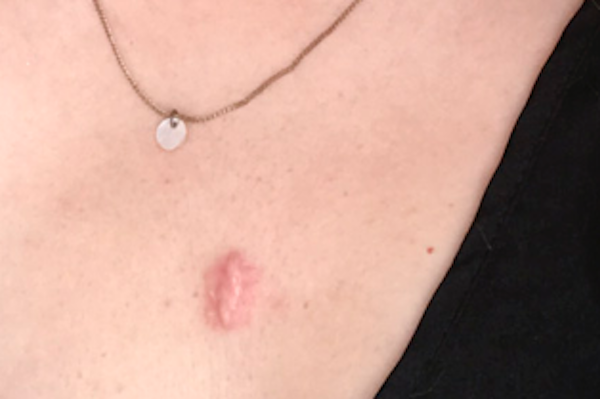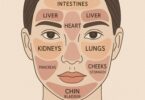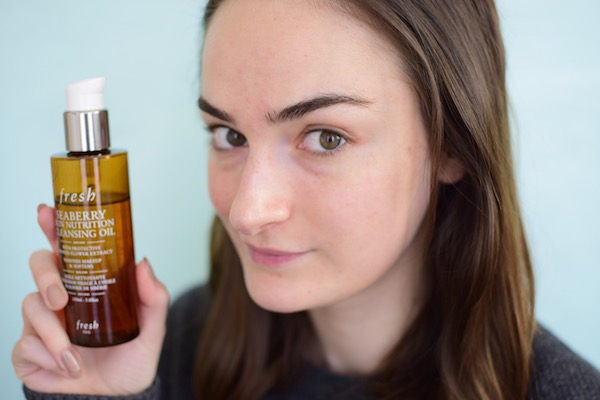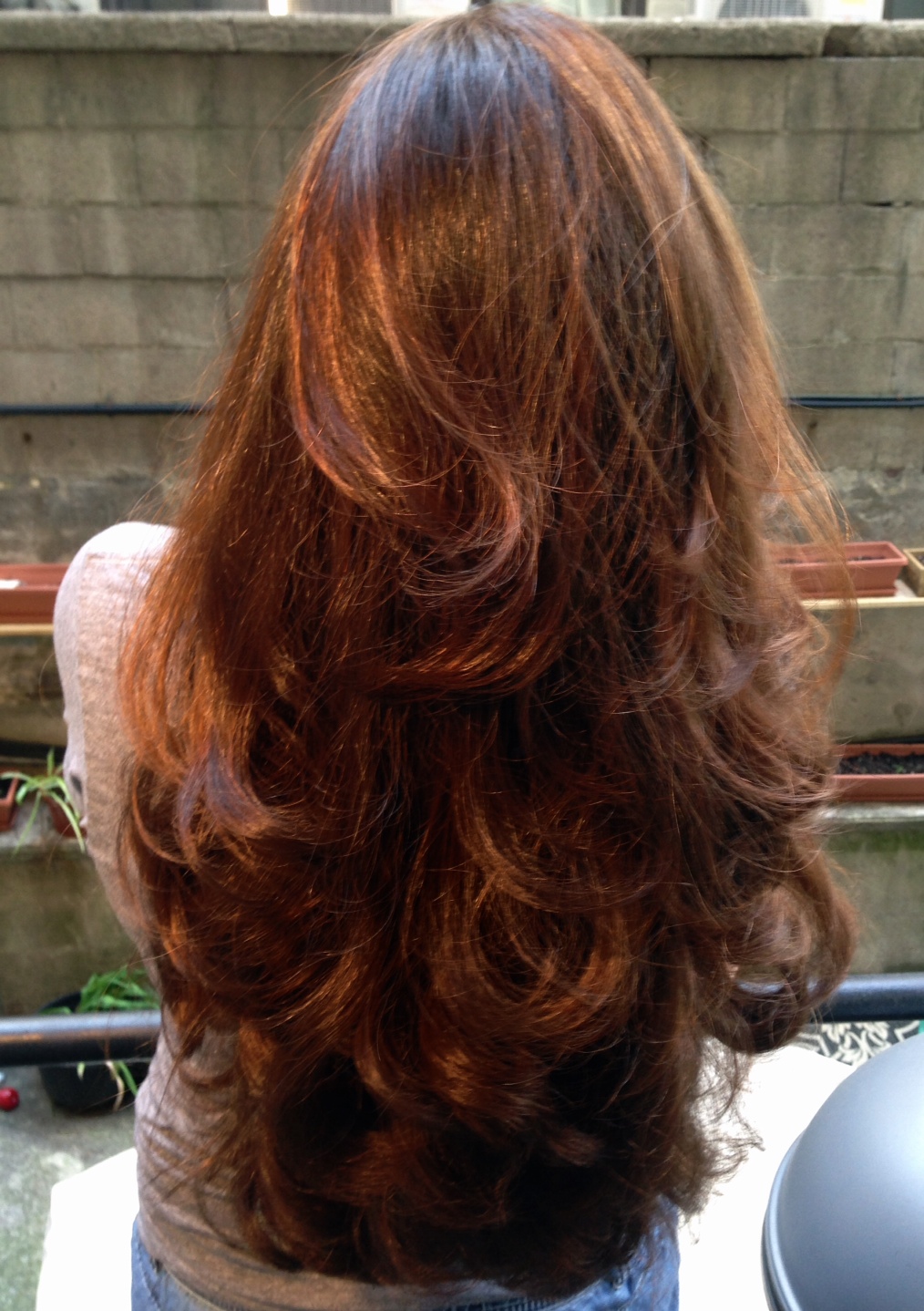Trying keloid scar treatment at home is easier than it sounds.
Being prone to keloid scars means that little things like piercing your ears, bug bites, acne, c-sections, or in my case removing an abnormal mole can leave you with a painful, puffy scar. Doing a keloid scar treatment at home is totally possible. But I found going to a dermatologist to be much more effective.

Keloid scar treatment at home
It’s not like I had the biggest scar in the world. But it’s pretty conspicuous sitting smack dab in the center of my chest, so I decided to treat it at home. I researched a lot of at home scar treatments that I absolutely do not recommend. People will go around saying that rubbing a little lemon juice on your scar daily will make it disappear. But really all that is going to do is make your skin sensitive and lemony fresh.

After silicone sheet treatment, before professional treatment.
Instead, the only keloid scar treatment at home that I found was not only effective but not made up pseudo science is using silicone scar sheets. This is something I wish I had known sooner rather than later. You can start using silicone scar sheets as soon as your skin has healed (so no open wounds). All you need to do is place the silicone sheet over the scarred skin and leave it there unless you’re showering or exercising. You can wash the sheet with soap and water to reactivate the stickiness.
Although there haven’t been any large studies, silicone scar sheets are one of the very few supported therapies for treating keloids and hypertrophic scars. The only problem with silicone sheets is that they don’t tend to completely heal scars. I only had a small difference from using silicone sheets for a month. Silicone treatments can also be used alongside other more dramatic treatments you can get from a doctor.
Keloid scar treatment with a doctor

Because I didn’t get much of a difference from using the silicone sheets I took it up a notch and went to a dermatologist. The other supported therapy for keloid scars is an injection of corticosteroid (triamcinolone) right into the raised tissue. This doesn’t dissolve the tissue, which would be pretty cool, but instead causes it to soften and flatten.
One of the concerns with the corticosteroid injection is hypopigmentation, the loss of pigmentation in the injection area. This can reportedly happen in up to 63 percent of treated scars, but wasn’t a big concern of mine because of my already Casper-pale skin.
The most noticeable effect (besides losing the raised scar) that I had is the redness and broken capillaries that were obscured by the tissue are now much more obvious. But we have concealer for these things.
Going for injections usually takes multiple treatments. Mine took four injections, and may or may not be covered by your insurance. And, because these are the scars that just won’t quit, there is still the possibility that the tissue may form again. My dermatologist told me that I may need a top up once a year or so. But every scar is different so it’s really just a waiting game to see what will happen.
Love this article? For more beauty, style, travel, and trending topics check out The Luxury Spot on Facebook. Like us and we’ll love you back!








